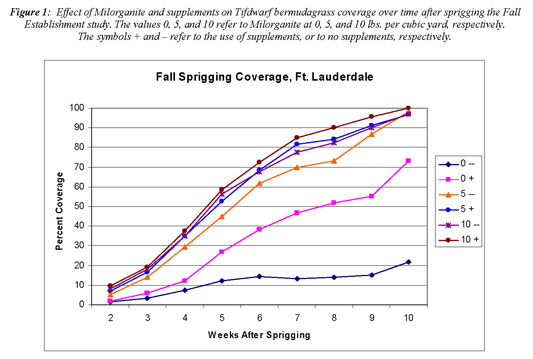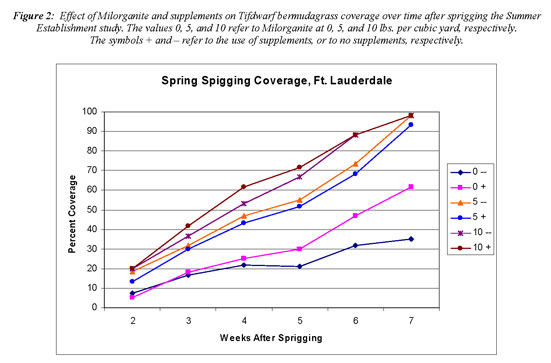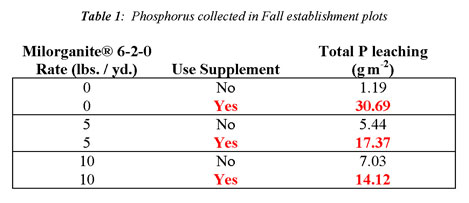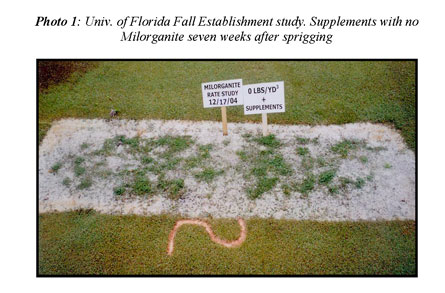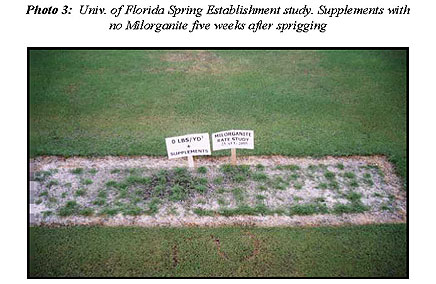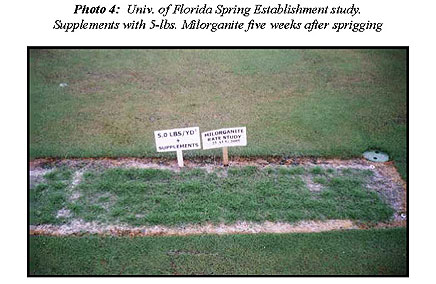Southern Greens
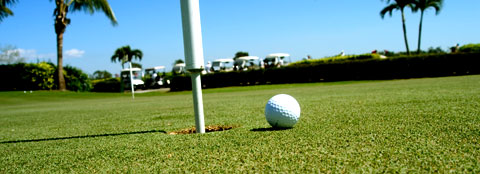
Rapid grow-in of golf greens is essential for quickly generating revenue at both newly constructed golf courses and those undergoing renovation. This is particularly important when using sand mixes with their inherent low fertility and nutrient holding capacity. Products that can help accomplish this while not adversely affecting the environment are especially favored.
Two research projects commissioned by Milorganite have established rates of Milorganite 6-2-0 fertilizer that are most effective in speeding greens establishment. Each study mixed Milorganite fertilizer with the sand/peat mix prior to greens construction. The University of Florida study also studied the composition of the leachate from these establishment plots. This was done to review the environmental impact of different fertilizer regimes and help determine the environmental impact of each regime.
Tifdwarf bermudagrass greens (USDA construction)
University of Florida – Ft. Lauderdale
A USDA specification golf green consisting of a 90:10 mix of quartz sand:peat was constructed at the University of Florida, Ft. Lauderdale. All plots for this green contained lysimeters, which were utilized for collecting leachate from the various fertilizer treatments.
A common recommendation for golf green establishment program in Florida includes the use of a supplemental fertilizer mix consisting of phosphorus, calcium and various micronutrients. The Milorganite greens establishment study compared the use of this mix with varying amounts of Milorganite 6-2-0. All plots (both fall and summer establishments) were sprigged with Tifdwarf bermudagrass.
In both fall and summer establishment, using Milorganite 6-2-0 with and without supplements sped up turf coverage. Using Milorganite 6-2-0 without supplements resulted in faster coverage compared to supplements only or the non-treated control. In many cases this fill-in rate was not significantly different than from using supplements (without the additional cost of these supplements).
Another benefit of not using supplements was shown in reviewing the amount of phosphorus leached from the plots. For the summer plots, the amount of phosphorus collected in the lysimeters was significantly higher for plots treated with supplements vs. those untreated. Also, note that, if supplements are used, the amount of phosphorus collected decreased with higher rates of Milorganite 6-2-0 being used. This is consistent with other research (not a part of this work) indicating that Milorganite 6-2-0 does not tend to leach phosphorus.
